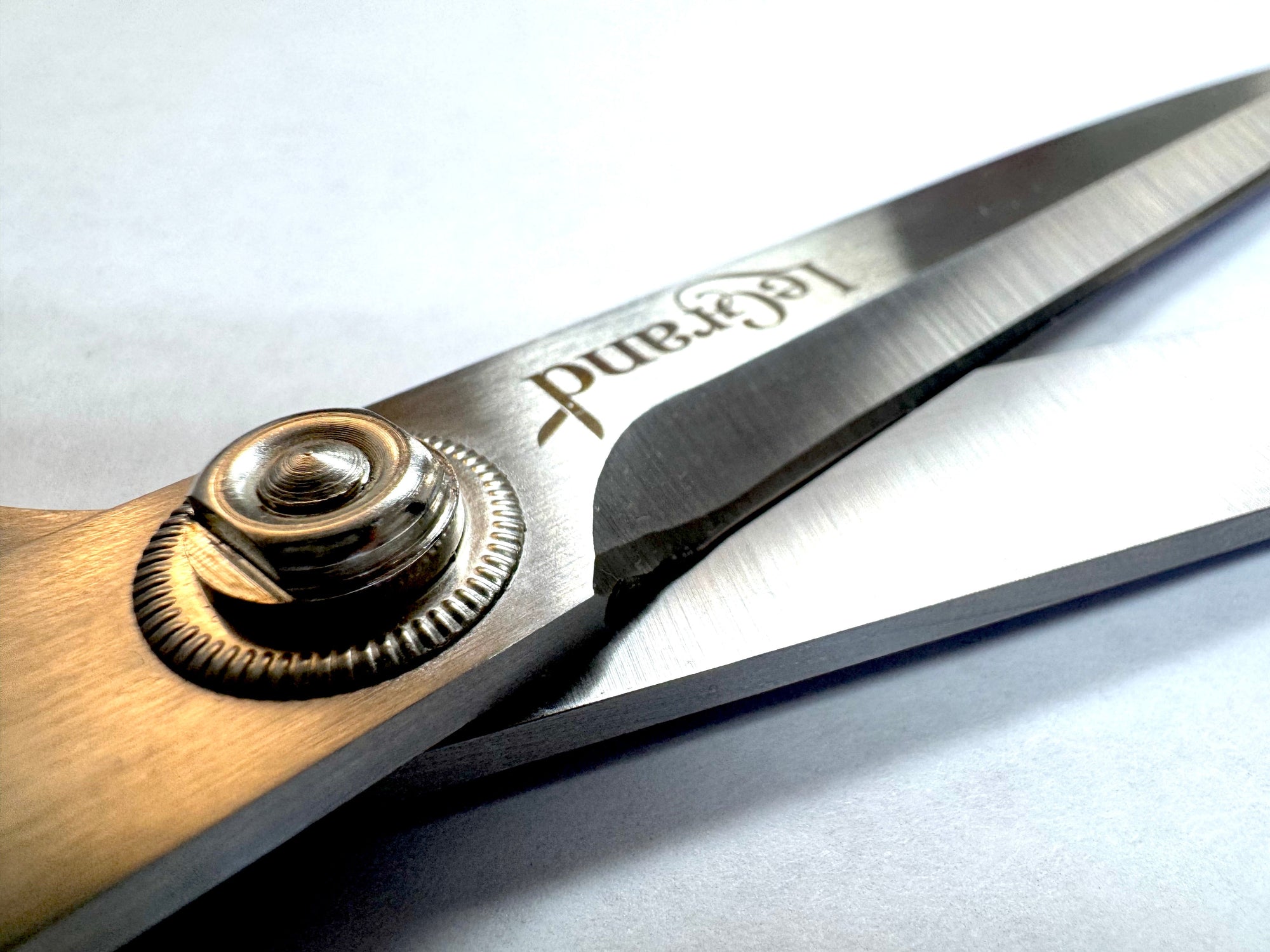When it comes to scissors, true quality is revealed by their sharpness. The difference between a good pair and a mediocre one isn’t just in the design—it’s in the details. At the heart of a great pair of scissors is a final, hand-finished edge. While machines can combine two blades into a scissor, they simply can’t achieve the precision required to consistently deliver a perfect cut. Skilled artisans perform that crucial finishing step, fine-tuning each blade to ensure the ultimate level of sharpness.

Using hard, specialized steels—like the ones found in premium scissors—only increases the challenge. These steels require even more precise adjustments, and it’s the human touch that ensures the blades remain uniformly sharp. This attention to detail is what sets apart a high-quality pair of scissors from a cheap, mass-produced alternative.
But what does “sharpness” really mean? In simple terms, a truly sharp scissor can cut through both thick and thin materials with ease. Imagine cutting through heavy denim: good scissors can handle multiple layers without the fabric shifting or tearing. On the other hand, try slicing a single, delicate sheet of tissue paper. A pair of finely tuned scissors will make a clean, effortless cut, almost as if the paper isn’t even there.

The best scissors provide a cutting experience where you barely feel any resistance—whether you’re working with heavy fabrics or delicate paper. When you hold a pair of well-crafted scissors, the difference is palpable; you’ll notice that they deliver a smooth, precise cut every time.
In a world where many only have a vague idea of what distinguishes quality scissors from the rest, we believe that experiencing these differences firsthand can be eye-opening. A good pair of scissors is more than just a tool—it’s an essential extension of your creativity and craftsmanship. So next time you’re selecting scissors for your project, remember: if they can’t cut through both thick denim and a single sheet of tissue with equal ease, they’re not living up to their true potential.


